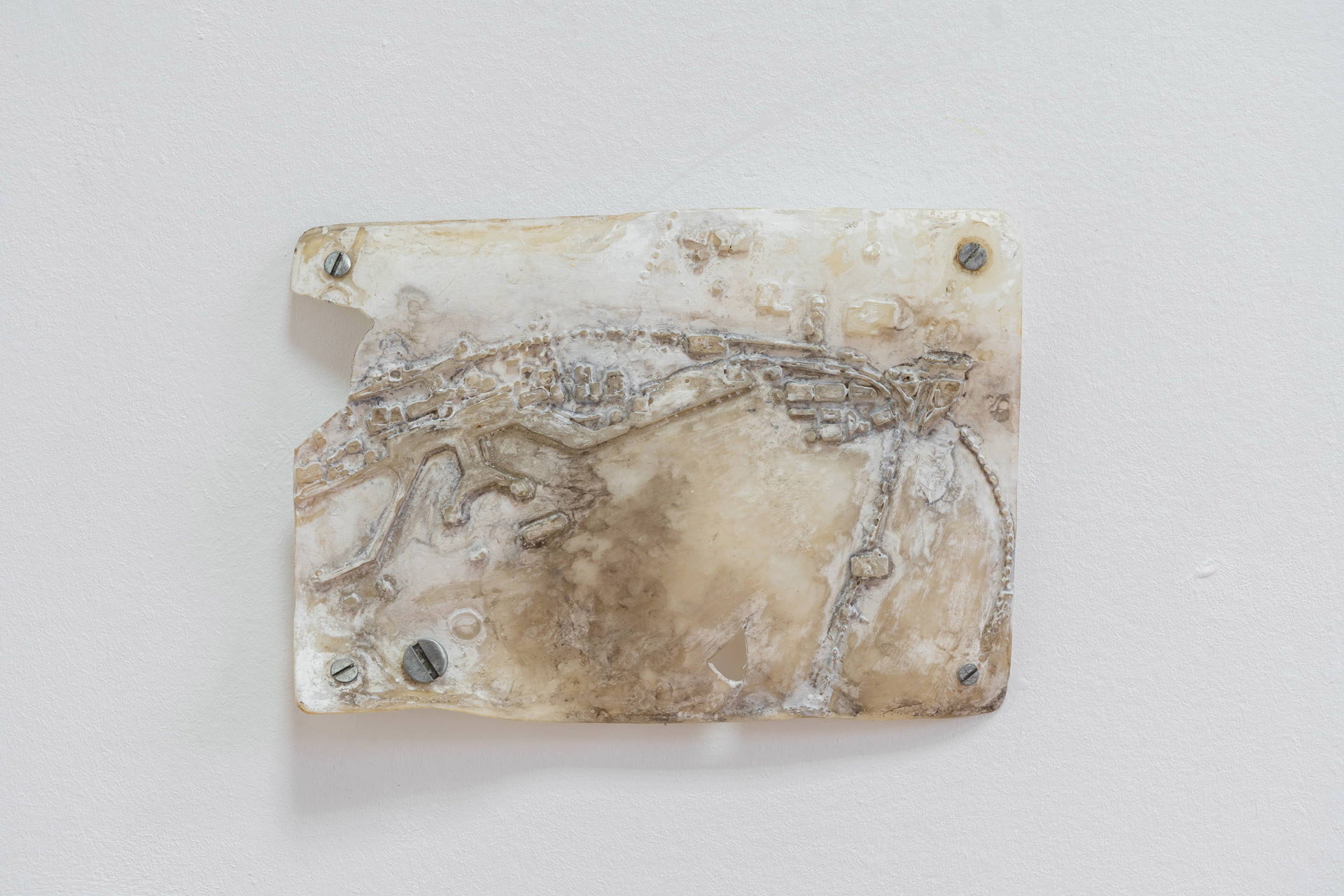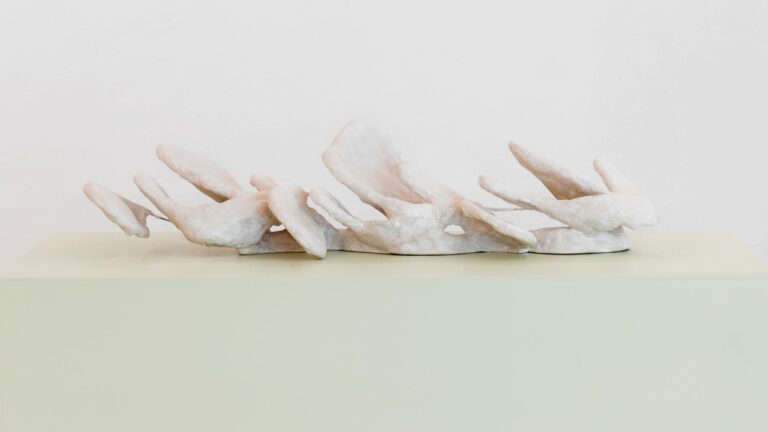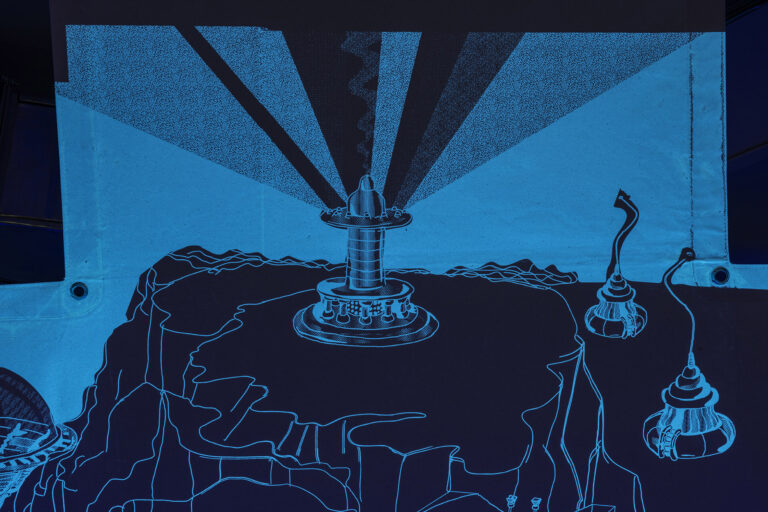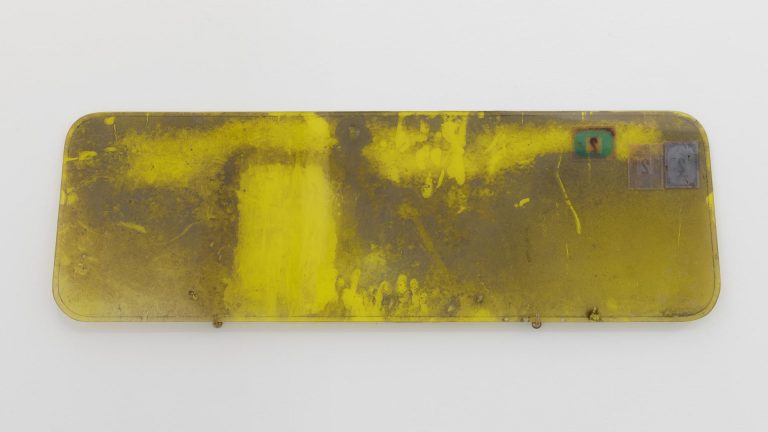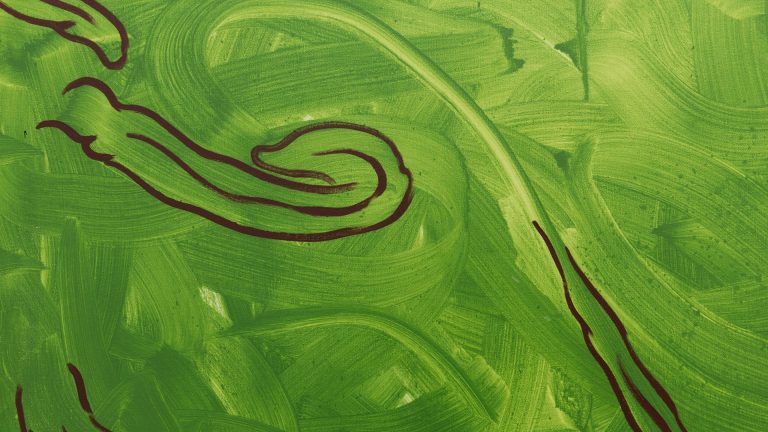Artist: Pedro Herrero Ferrán
Exhibition title: Above Fields of Narcissi
Venue: Yaby, Madrid, Spain
Date: July 6 – 26, 2021
Photography: Alejandro Cayetano / all images copyright and courtesy of the artists and Yaby, Madrid
The aerial view connects the figures of the cartographer and the thief. The gaze of the cartographer is a general one which orders and synthesizes the space from above. The thief is only trackable on low flight: the gaze of the thieves is at the level of the space they inhabit and recreate, infringing order and law —according to Pedro Herrero Ferrán, a thief fabricates their own cartography, one that is intensely local and universally useless. Narcissus, doubles and reproduction are core to Jean Genet’s The Thief’s Journal: its protagonist wanders the city stealing and seeing himself reflected on the surfaces, objects and characters with which he interacts. He says: “I am alone in the world, and I am not sure that I am not the king of these flowers. They render homage as I pass, bow without bowing, but recognize me. They know that I am their living, moving, agile representative, conqueror of the wind.”
Above Fields of Narcissi presents a series of paradisciplinary reproductions that depart from the cartographer-thief binomial, appropriating utilitarian elements that are related to flight and defining a mode of production that accommodates itself in the theft of plans and standards: for aircrafts, airports and operative systems of modular parts. A dynamic of duplications and reflections marks this excessive and personal instruction of designs that point to the possibility of flying and its visual implications. As Douglas Crimp explains, the graphic design of HIV/AIDS activism succeeded in occupying public space by connecting a personal experience to general views through an analysis of the social, political and economic environment. It used all the technical and functional knowledge that the discipline had accumulated while contributing to its dissident rearticulation, compressing and expressing radical information in models capable of reaching at once those affected by the epidemic, onlookers who came across a demonstration by chance, and journalists of media addressed to the greater public. The theft of recognizable and functional languages and forms became an inherent resource in the productive and communicative strategy of these groups.
One night, Genet writes, a thief comes back from stealing and recounts his feats: unaware of the “marvels” he has accomplished, he speaks using a “forthright” language. Genet rejects this generic and functional language but asserts that not even a language like such could take from the fantasy and potency of the thief’s marvels. For Genet, it is thanks to thieves that tragedy is possible: the intensified experience, the dramatism, the conscious exercise of affirming the sentimental by giving it tragic dimensions. The lesbian flâneur in Sarah Schulman’s Girls, Visions and Everything, at the end of the novel, climbs to the rooftop of her New York building and, looking at the city from above, thinks of the people living below who “have enough guts to get out of wherever they are because they’re driven by a higher fantasy of what is possible, or because the people around them throw them out. Then these individuals come here to a giant cacophony of sound and light and activity and they find out that what they imagined doesn’t exist at all. But there is something even more frightening and holy which is the spectacle of all these people having this realization together.”



















